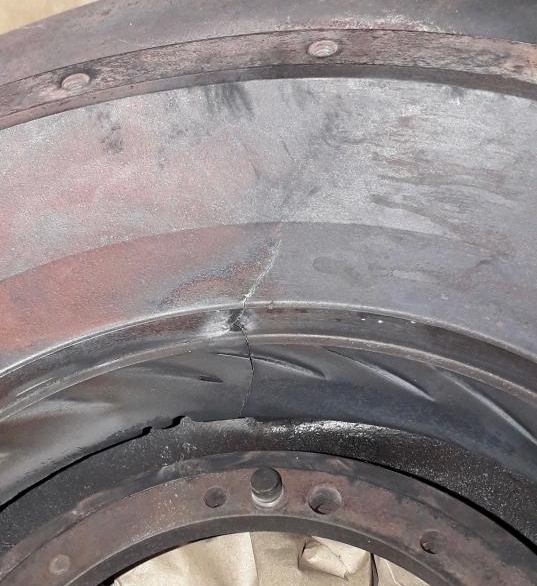When it comes to military applications, equipment occasionally undergoes wear and tear, and it is vital to identify the causes of even the slightest damage. Case in point Wärtsilä, which supplies key components to the French army. “The engine of the Leclerc tank is made up of a large number of castings, some of which are subject to heavy stresses as a result of weight and temperature. Our teams found cracks on this engine, and we had to identify the cause (overheating, corrosion, etc.) in order to put a stop to the phenomenon,” explained Franck Foissey, materials expert at Wärtsilä. Three of the damaged volutes sent to Cetim were selected to undergo a series of examinations: metallographic, fractographic, chemical analysis, mechanical strength tests, etc. The fractography revealed that in each case the crack occurred in an area of low material thickness (1.2 to 2 mm instead of the regulatory 3 mm). Here in these thinner areas, the material was less resistant to temperature stresses. “The presence of a thicker wall on the directly opposite side corroborated the assumption that the sand core used to make the tubing during casting had become offset,” disclosed Gilles Regheere, a foundry, forging and hot metallurgy specialist at Cetim.
A more in-depth response
Calculations of the mechanical strength and ductility of the material used revealed properties well below normal, so further tests were carried out. These uncovered and excessively low density of graphite particles, counterbalanced by an excessively high volume fraction of chromium carbides. This inappropriate composition of the cast iron results in lower thermal conductivity, which in turn causes premature damage due to thermal fatigue. To make matters worse, the nodularity of the graphite particles was noticeably poor. The uneven nature of the graphite particles created initiation points that generated stresses which were a further cause of cracking. “In the end, this spheroidal graphite cast iron, that had been made defective by a cold lap, shortened the service life of the part to 1,410 hours,” pointed out Gilles Regheere.


